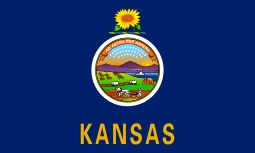List of Governors of Kansas
| Governor of Kansas | |
|---|---|
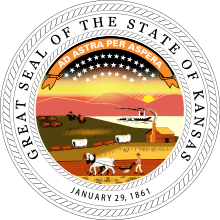 | |
 Standard of the Governor | |
| Residence | Cedar Crest |
| Term length | Four years, renewable once |
| Inaugural holder | Charles L. Robinson |
| Formation | February 9, 1861 |
| Salary | $99,636 (2013)[1] |
| Website |
governor |
The Governor of Kansas is the head of the executive branch of Kansas's state government[2] and the commander-in-chief of the state's military forces.[3] The governor has a duty to enforce state laws,[2] and the power to either approve or veto bills passed by the Kansas Legislature,[4] to convene the legislature at any time,[5] and to grant pardons.[6]
The governor has a four-year term, commencing on the second Monday of January after election.[7] The governor originally had a two-year term; this was changed to four years by a constitutional amendment in 1974. The lieutenant governor is elected at the same time as the governor.[7] When the office of governor becomes vacant for any reason, the lieutenant governor becomes governor for the remainder of the term.[8]
Since becoming a state, Kansas has had 47 governors, including 34 Republicans, 11 Democrats, and 2 Populists. The state's longest-serving governors were Robert Docking, John W. Carlin, and Bill Graves, each of whom served 8 years and 4 days (Docking served four two-year terms; Carlin and Graves each served two four-year terms). The shortest-serving governor was John McCuish, who served only 11 days after the resignation of Fred Hall. The current governor is Republican Jeff Colyer, who took office on January 31, 2018, after the resignation of Sam Brownback, who was confirmed by the United States Senate to be the next U.S. Ambassador-at-Large for International Religious Freedom.
History
The office was created in 1861 when Kansas was officially admitted to the United States as the 34th state. Prior to statehood in 1861, the office was preceded by a Presidential appointed Governor of Kansas Territory with similar powers.
Despite being an executive branch official, the Governor also possesses legislative and judicial powers. The Governor's responsibilities include making yearly "State of the State" addresses to the Kansas Legislature, submitting the budget, ensuring that state laws are enforced, and that the peace is preserved.
The 47th Governor of Kansas is Jeff Colyer. His term began on January 31, 2018. He succeeded Sam Brownback, who resigned upon the United States Senate vote confirming his as an Ambassador.
Gubernatorial term of office and lack of requirements for running
.svg.png)
There is no lifetime limit on the number of times he or she may be elected, but a governor who has been elected to two consecutive terms must be out of office for at least one election cycle before being eligible once again for re-election. Elections occur at the same time as the Congressional midterm elections, and each term begins on the second Monday of January following the election. The lieutenant governor is subject to the same limitations and runs on a combined ticket with the governor.[9] Furthermore, there is neither an age requirement nor a residency requirement to run for the office; as of 2017 three Kansan teenagers were doing so.[10]
If the governor becomes incapacitated, the lieutenant governor assumes the duties of the governor. However, if both offices become vacant, the line of succession is determined by the legislature. Under present law, the President of the Senate would be next in line to assume the governorship, followed by the Speaker of the House.
Residence
Since 1962, the Governor of Kansas has resided in the governor's mansion, known as Cedar Crest. It was designed by the architect firm Wight and Wight. It was added to the National Register of Historic Places in 1982.
Governors
Territorial governors
- The area that became Kansas was part of Louisiana Territory, later renamed Missouri Territory, until 1821, and unorganized until it became its own territory on May 30, 1854; see List of Governors of Missouri for the period from 1805 to 1821.
- A small part of Kansas was once claimed as part of the Republic of Texas (see List of Presidents of the Republic of Texas, and before that, was part of Mexico (see Spanish governors of New Mexico).
- Parties
Democratic (5) Independent (1)
| # | Governor | Term in office | Appointed by | ||
|---|---|---|---|---|---|
| 1 | 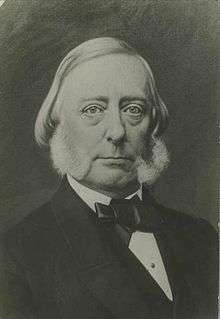 |
Andrew Horatio Reeder | July 7, 1854 – August 16, 1855 |
Franklin Pierce | |
| 2 | 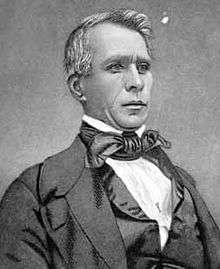 |
Wilson Shannon | September 5, 1855 – August 18, 1856 | ||
| 3 | 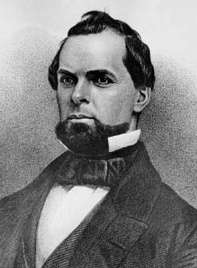 |
John W. Geary | September 9, 1856 – March 20, 1857 | ||
| 4 | 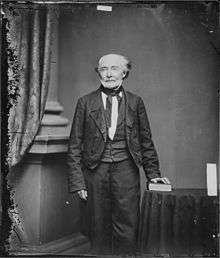 |
Robert J. Walker | May 27, 1857 – December 15, 1857 |
James Buchanan | |
| 5 |  |
James W. Denver | December 1857 – November 1858 | ||
| 6 | 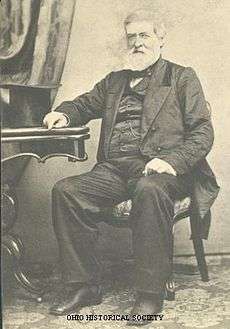 |
Samuel Medary | December 1858 – December 1860 | ||
Governors of the State of Kansas
The eastern bulk of Kansas Territory was admitted to the Union as Kansas on January 29, 1861; the remainder become unorganized territory which would shortly be assigned to Colorado Territory. The Kansas Constitution provided that a governor and lieutenant governor be elected every two years.[11] An amendment in 1972 increased terms to four years,[12], and provided that the governor and lieutenant governor are elected on the same ticket. In the original constitution, should the office of governor be vacant, the powers would devolve upon the lieutenant governor, who nonetheless would remain in that office;[13] an amendment in 1972 changed that so that, in such an event, the lieutenant governor becomes governor, and relies on the legislature to provide for succession after that.[14]
- Parties
Democratic (11) Populist (2) Republican (34)
| # | Governor | Term in office | Party | Election | Lt. Governor[lower-alpha 1] | |||
|---|---|---|---|---|---|---|---|---|
| 1 | 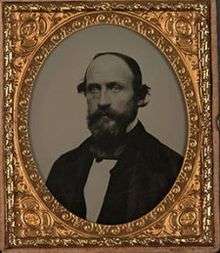 |
Charles L. Robinson | February 9, 1861 – January 12, 1863 |
Republican | 1860 | Joseph Pomeroy Root | ||
| 2 | 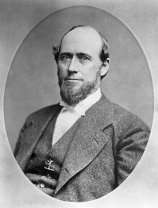 |
Thomas Carney | January 12, 1863 – January 9, 1865 |
Republican | 1862 | Thomas A. Osborn | ||
| 3 | 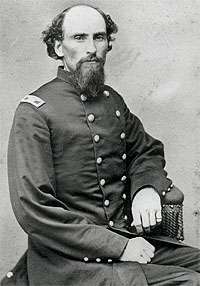 |
Samuel J. Crawford | January 9, 1865 – November 4, 1868 |
Republican | 1864 | James McGrew | ||
| 1866 [lower-alpha 2] |
Nehemiah Green | |||||||
| 4 | 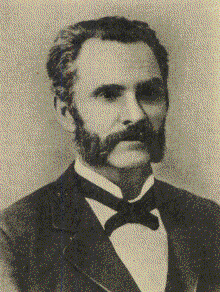 |
Nehemiah Green | November 4, 1868 – January 11, 1869 |
Republican | Vacant | |||
| 5 |  |
James M. Harvey | January 11, 1869 – January 13, 1873 |
Republican | 1868 | Charles Vernon Eskridge | ||
| 1870 | Peter Percival Elder | |||||||
| 6 | 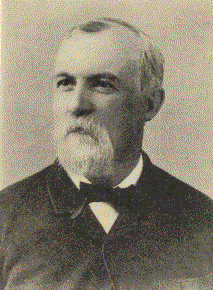 |
Thomas A. Osborn | January 13, 1873 – January 8, 1877 |
Republican | 1872 | Elias S. Stover | ||
| 1874 | Melville J. Salter | |||||||
| 7 |  |
George T. Anthony | January 8, 1877 – January 13, 1879 |
Republican | 1876 | |||
| Lyman U. Humphrey | ||||||||
| 8 |  |
John P. St. John | January 13, 1879 – January 8, 1883 |
Republican | 1878 | |||
| 1880 | David Wesley Finney[lower-alpha 3] | |||||||
| 9 |  |
George W. Glick | January 8, 1883 – January 12, 1885 |
Democratic | 1882 | |||
| 10 |  |
John A. Martin | January 12, 1885 – January 14, 1889 |
Republican | 1884 | Alexander P. Riddle | ||
| 1886 | ||||||||
| 11 | 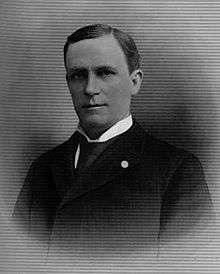 |
Lyman U. Humphrey | January 14, 1889 – January 8, 1893 |
Republican | 1888 | Andrew Jackson Felt | ||
| 1890 | ||||||||
| 12 | 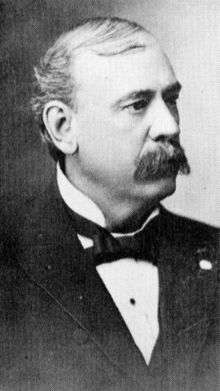 |
Lorenzo D. Lewelling | January 8, 1893 – January 14, 1895 |
Populist | 1892 | Percy Daniels | ||
| 13 | 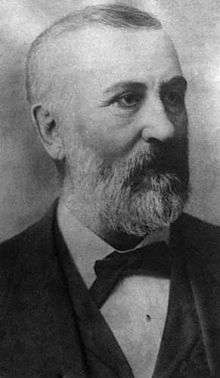 |
Edmund N. Morrill | January 14, 1895 – January 11, 1897 |
Republican | 1894 | James Armstrong Troutman | ||
| 14 | 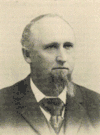 |
John W. Leedy | January 11, 1897 – January 9, 1899 |
Populist | 1896 | Alexander Miller Harvey | ||
| 15 |  |
William E. Stanley | January 9, 1899 – January 12, 1903 |
Republican | 1898 | Harry E. Richter | ||
| 1900 | ||||||||
| 16 | 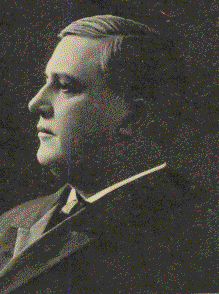 |
Willis J. Bailey | January 12, 1903 – January 9, 1905 |
Republican | 1902 | David John Hanna | ||
| 17 |  |
Edward W. Hoch | January 9, 1905 – January 11, 1909 |
Republican | 1904 | |||
| 1906 | William James Fitzgerald | |||||||
| 18 | 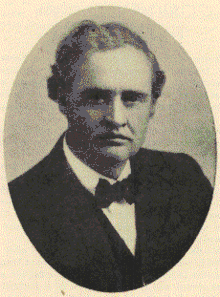 |
Walter R. Stubbs | January 11, 1909 – January 13, 1913 |
Republican | 1908 | |||
| 1910 | Richard Joseph Hopkins | |||||||
| 19 | 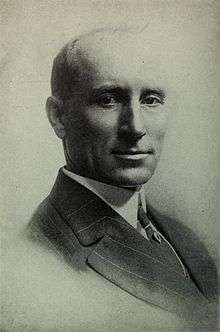 |
George H. Hodges | January 13, 1913 – January 11, 1915 |
Democratic | 1912 | Sheffield Ingalls[lower-alpha 3] | ||
| 20 | 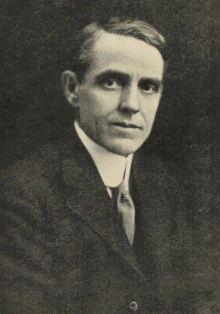 |
Arthur Capper | January 11, 1915 – January 13, 1919 |
Republican | 1914 | William Yoast Morgan | ||
| 1916 | ||||||||
| 21 | 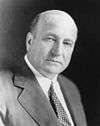 |
Henry J. Allen | January 13, 1919 – January 8, 1923 |
Republican | 1918 | Charles Solomon Huffman | ||
| 1920 | ||||||||
| 22 | 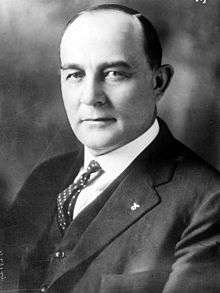 |
Jonathan M. Davis | January 8, 1923 – January 12, 1925 |
Democratic | 1922 | Ben S. Paulen[lower-alpha 3] | ||
| 23 | 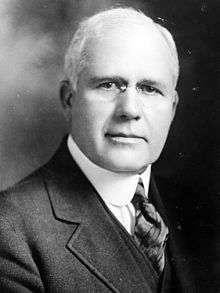 |
Ben S. Paulen | January 12, 1925 – January 14, 1929 |
Republican | 1924 | De Lanson Alson Newton Chase | ||
| 1926 | ||||||||
| 24 |  |
Clyde M. Reed | January 14, 1929 – January 12, 1931 |
Republican | 1928 | Jacob W. Graybill[lower-alpha 3] | ||
| 25 | 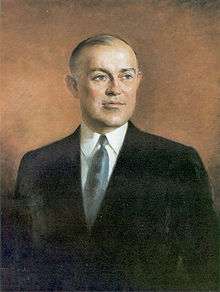 |
Harry H. Woodring | January 12, 1931 – January 9, 1933 |
Democratic | 1930 | |||
| 26 |  |
Alfred M. Landon | January 9, 1933 – January 11, 1937 |
Republican | 1932 | Charles W. Thompson | ||
| 1934 | ||||||||
| 27 | 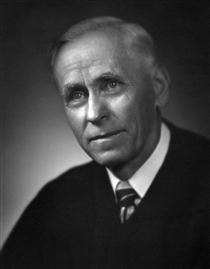 |
Walter A. Huxman | January 11, 1937 – January 9, 1939 |
Democratic | 1936 | William M. Lindsay | ||
| 28 | 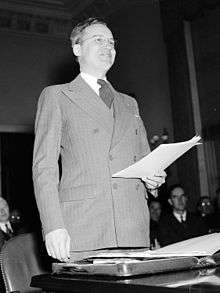 |
Payne Ratner | January 9, 1939 – January 11, 1943 |
Republican | 1938 | Carl E. Friend | ||
| 1940 | ||||||||
| 29 | 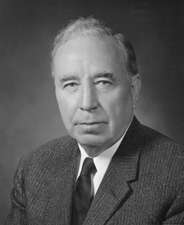 |
Andrew F. Schoeppel | January 11, 1943 – January 13, 1947 |
Republican | 1942 | Jess C. Denious | ||
| 1944 | ||||||||
| 30 | .jpg) |
Frank Carlson | January 13, 1947 – November 28, 1950 |
Republican | 1946 | Frank L. Hagaman | ||
| 1948 [lower-alpha 4] | ||||||||
| 31 |  |
Frank L. Hagaman | November 28, 1950 – January 8, 1951 |
Republican | Vacant | |||
| 32 |  |
Edward F. Arn | January 8, 1951 – January 10, 1955 |
Republican | 1950 | Fred Hall | ||
| 1952 | ||||||||
| 33 |  |
Fred Hall | January 10, 1955 – January 3, 1957 |
Republican | 1954 [lower-alpha 5] |
John McCuish | ||
| 34 |  |
John McCuish | January 3, 1957 – January 14, 1957 |
Republican | Vacant | |||
| 35 |  |
George Docking | January 14, 1957 – January 9, 1961 |
Democratic | 1956 | Joseph W. Henkle Sr. | ||
| 1958 | ||||||||
| 36 | _2.jpg) |
John Anderson Jr. | January 9, 1961 – January 11, 1965 |
Republican | 1960 | Harold H. Chase | ||
| 1962 | ||||||||
| 37 |  |
William H. Avery | January 11, 1965 – January 9, 1967 |
Republican | 1964 | John Crutcher[lower-alpha 3] | ||
| 38 |  |
Robert Docking | January 9, 1967 – January 13, 1975 |
Democratic | 1966 | |||
| 1968 | James H. DeCoursey Jr. | |||||||
| 1970 | Reynolds Shultz[lower-alpha 3] | |||||||
| 1972 | Dave Owen[lower-alpha 3] | |||||||
| 39 |  |
Robert F. Bennett | January 13, 1975 – January 8, 1979 |
Republican | 1974 | Shelby Smith | ||
| 40 | 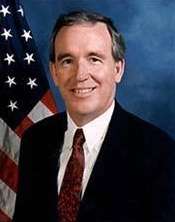 |
John W. Carlin | January 8, 1979 – January 12, 1987 |
Democratic | 1978 | Paul Dugan | ||
| 1982 | Thomas Docking | |||||||
| 41 |  |
Mike Hayden | January 12, 1987 – January 14, 1991 |
Republican | 1986 | Jack D. Walker | ||
| 42 |  |
Joan Finney | January 14, 1991 – January 9, 1995 |
Democratic | 1990 | Jim Francisco | ||
| 43 | 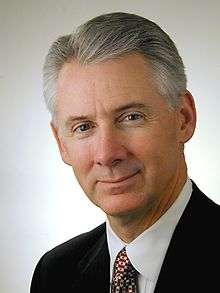 |
Bill Graves | January 9, 1995 – January 13, 2003 |
Republican | 1994 | Sheila Frahm (resigned June 11, 1996) | ||
| Vacant | ||||||||
| Gary Sherrer (appointed July 18, 1996) | ||||||||
| 1998 | ||||||||
| 44 | 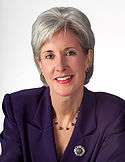 |
Kathleen Sebelius | January 13, 2003 – April 28, 2009 |
Democratic | 2002 | John E. Moore | ||
| 2006 [lower-alpha 6] |
Mark Parkinson | |||||||
| 45 | .jpg) |
Mark Parkinson | April 28, 2009 – January 10, 2011 |
Democratic | Vacant | |||
| Troy Findley (appointed May 15, 2009) | ||||||||
| 46 |  |
Sam Brownback | January 10, 2011 – January 31, 2018 |
Republican | 2010 | Jeff Colyer | ||
| 2014 [lower-alpha 7] | ||||||||
| 47 | .jpg) |
Jeff Colyer | January 31, 2018 – present |
Republican | Tracey Mann (appointed February 14, 2018) | |||
Other high offices held
This is a table of congressional seats, other federal offices, and other governorships held by governors. All representatives and senators mentioned represented Kansas except where noted. * denotes those offices which the governor resigned to take.
Living former governors
As of January 2018, there are six living former governors, the oldest being John W. Carlin (served 1979–1987, born 1940). The most recent governor of Kansas to die was John Anderson Jr. (served 1961–1965, born 1917), on September 15, 2014.[15]
| Governor | Gubernatorial term | Date of birth (and age) |
|---|---|---|
| John W. Carlin | 1979–1987 | August 3, 1940 |
| Mike Hayden | 1987–1991 | March 16, 1944 |
| Bill Graves | 1995–2003 | January 9, 1953 |
| Kathleen Sebelius | 2003–2009 | May 15, 1948 |
| Mark Parkinson | 2009–2011 | June 24, 1957 |
| Sam Brownback | 2011–2018 | September 12, 1956 |
See also
Notes
- ↑ Lieutenant governors represented the same party as their governor unless noted.
- ↑ Crawford resigned to take command of the 19th Kansas Infantry; as lieutenant governor, Green succeeded him.
- 1 2 3 4 5 6 7 Represented the Republican Party
- ↑ Carlson resigned to take an elected seat in the United States Senate; as lieutenant governor, Hagaman succeeded him.
- ↑ Hall resigned so that his successor would appoint him to the Kansas Supreme Court; as lieutenant governor, McCuish succeeded him, and appointed him to the court.
- ↑ Sebelius resigned to become United States Secretary of Health and Human Services; as lieutenant governor, Parkinson succeeded her.
- ↑ Governor Brownback resigned on January 31, 2018, to become United States Ambassador-at-Large for International Religious Freedom; as lieutenant governor, Colyer succeeded him.
References
- General
- "Kansas Governor Mark Parkinson." State of Kansas. Retrieved September 7, 2009.
- "Governors of Kansas." National Governors Association. Retrieved September 7, 2009.
- "Kansas Governors by Terms in Office." Kansas State Historical Society. Retrieved September 7, 2009.
- Constitutions
- "Constitution of the State of Kansas" (1859). State Library of Kansas. Retrieved September 7, 2009.
- Specific
- ↑ "CSG Releases 2013 Governor Salaries". The Council of State Governments. June 25, 2013. Retrieved November 23, 2014.
- 1 2 KS Const. art. I, § 3.
- ↑ KS Const. art. VIII, § 4.
- ↑ KS Const. art. II, § 14.
- ↑ KS Const. art. I, § 5.
- ↑ KS Const. art. I, § 7.
- 1 2 KS Const. art. I, § 1.
- ↑ KS Const. art. I, § 11.
- ↑ Constitution of the State of Kansas Archived November 20, 2008, at the Wayback Machine.
- ↑ Woodall, Hunter (September 28, 2017). "As third teen joins Kansas governor race, consider this: No rule says a dog can't run". The Kansas City Star. Retrieved September 28, 2017.
- ↑ 1861 Const. art. I, § 1
- ↑ KS Const. art. 1, § 1
- ↑ 1861 Const. art I, § 11
- ↑ KS Const. art I, § 11
- ↑ "John Anderson Jr., former Kansas governor, dies at 97". Retrieved January 25, 2018.
External links
| Wikimedia Commons has media related to Governors of Kansas. |
- Office of the Governor of Kansas website
